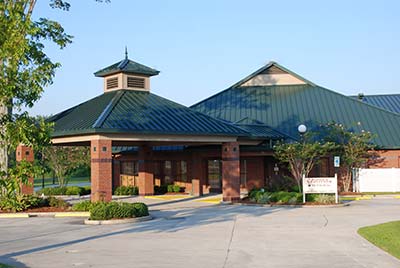Get Back Pain Relief
Back pain causes an estimated 83 million lost workdays in America every year — and when untreated, back pain could leave you unable to work or function at all. At Headache & Pain Center,amc interventional pain management physicians Jimmy Ponder Jr., MD, and Adolfo Cuadra, MD, approach back pain in a unique way. At their two office locations in Gray and New Iberia, Louisiana, the team uses state-of-the-art technology to disable your back pain and enable a better quality of life for you. Call the office near you or book your appointment with the online scheduler now.
Back Pain Q & A's
What causes back pain?
Back pain is extremely common, and there are many reasons for it. Particularly common is lumbar back pain, or low back pain. Common reasons for back pain include:
- Arthritis: Osteoarthritis and rheumatoid arthritis
- Sacroiliac (SI) joint dysfunction: Instability, inflammation, or other SI issues
- Herniated disc: Bulging spinal disc
- Sprains: Ligament overstretching or tearing
- Strains: Tendon or muscle overstretching or tearing
- Spinal stenosis: Spinal canal narrowing that squeezes nerves
- Sciatica: Inflammation or pressure on your sciatic nerve
- Traumatic injury: Blows to the spine or other trauma
- Fractures: Vertebral compression fractures from trauma or osteoporosis
Muscle spasms are another common cause of back pain. They can be caused by overworking a muscle, trauma, or other injury. For example, if you have a muscle strain and don’t treat it, the inflammation in the strained muscle can lead to painful spasms.
When should I see a pain management specialist for back pain?
Acute pain — pain that lasts for just a few days or weeks — may be manageable without treatment.
But if you’re suffering from chronic pain, which lingers for much longer than expected, usually at least three months, you should see the pain management team at Headache & Pain Center, amc.
If your chronic pain holds you back at work, school, home, socially, or in any other significant way, there’s no reason to work around it or try to push through while you’re feeling miserable.
The pain management specialists have cutting-edge nonsurgical interventional pain relief waiting for you.
How do you treat back pain?
Two of the most common interventional pain management treatments for back pain are injections and radiofrequency facet treatments.
Injections
Injections contain anesthetic medication, often combined with steroid medication. One common injection for back pain is the sacroiliac joint injection, which your doctor administers into the joint that joins your pelvis and sacrum. The SI joint causes up to 30% of all low back pain.
Other types of back pain injections include epidural injections, which go in the epidural space in your outermost spinal canal; facet joint injections, which go in small facet joints that connect your spine bones; and nerve blocks, which can deactivate nerve signaling in a specific area.
Radiofrequency facet treatments
Radiofrequency facet treatments use radiofrequency energy, delivered through a special type of needle, to heat a painful nerve and create a lesion. This stops pain signaling in facet joints or sacroiliac joints.
There are many other options for treatment, based on your cause of back pain. The team may suggest kyphoplasty, spinal cord stimulation, or another minimally invasive procedure if you need a permanent or long-lasting solution.
Need back pain management? Call Headache & Pain Center, amc or book an appointment online now.




